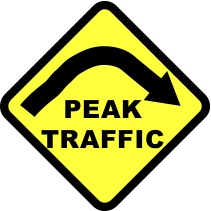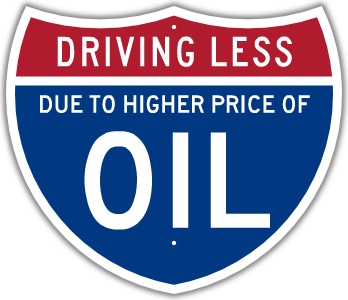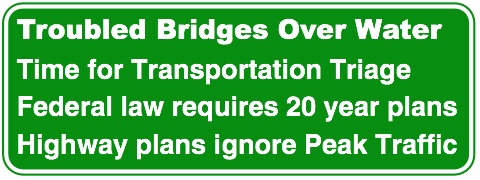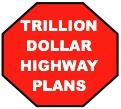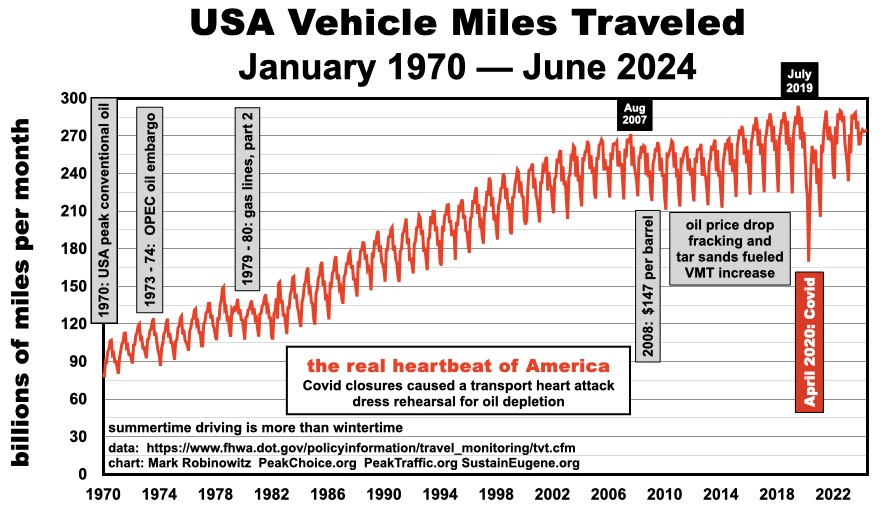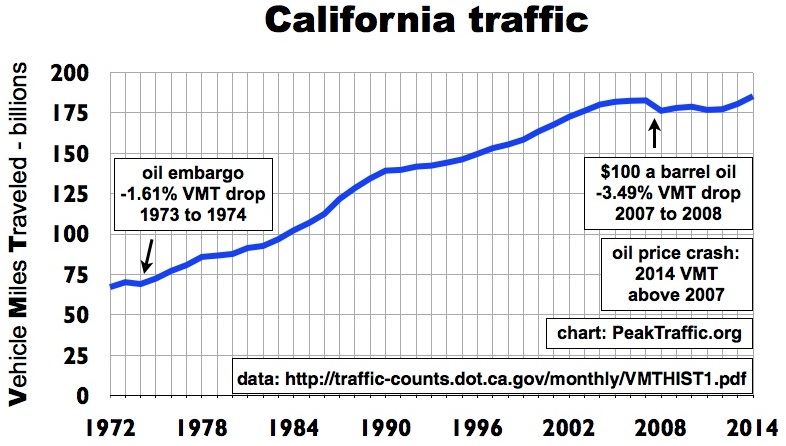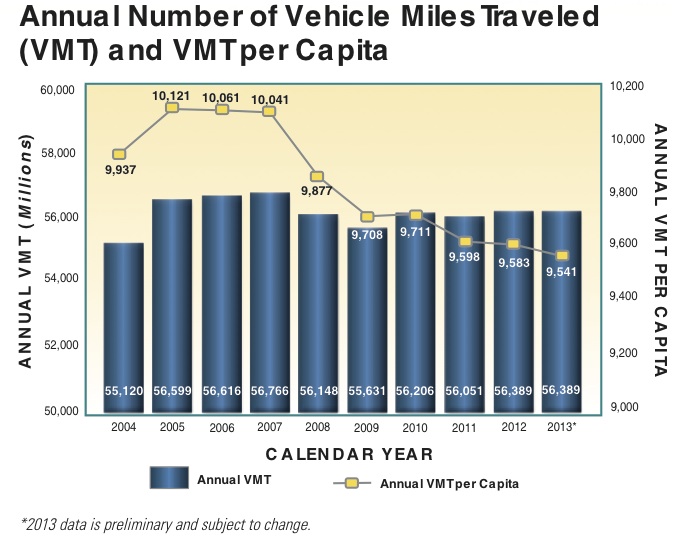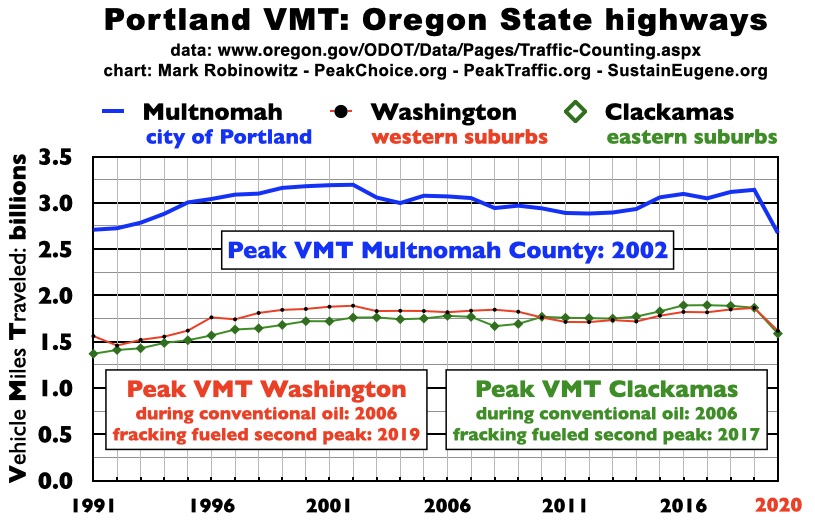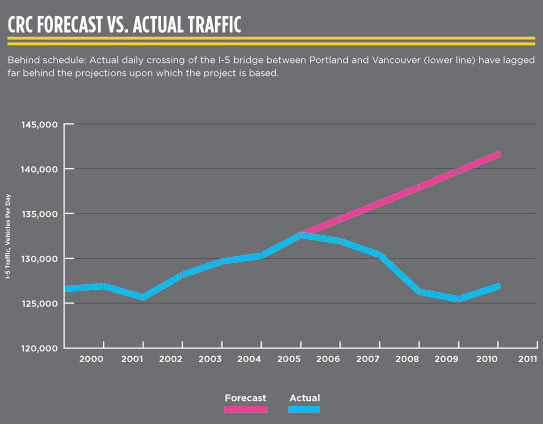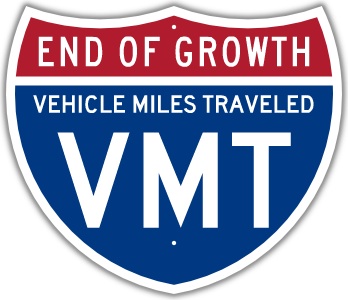 Peak Vehicle Miles Traveled (VMT)
Peak Vehicle Miles Traveled (VMT)
Peak Traffic, during conventional oil, was 2007
Fracking and tar sands caused an additional peak just before Covid closures lowered traffic levels
Depletion may prevent post-covid traffic rebound
Three dollar a gallon gasoline ended traffic growth, four dollar a gallon gasoline lowered VMT. Peak traffic during conventional oil was in 2007, nationally. Tar sands and fracking slightly increased VMT after conventional oil peaked globally and continued to decline domestically.
The plateau of peak traffic crashed into highway planners assumptions about endless growth. One means to extract more money for road expansion is
VMT mileage, taxing everyone their mileage. This requires constant tracking of everyone's travels. VMT tolling charges an SUV and a small car the same. Speeders who use more fuel pay the same as motorists who drive the speed limit. Gas taxes make more sense than VMT taxes if energy efficiency and petroleum depletion are considered.
transportation surveillance: The J. Edgar Hoover Memorial Porkway
Oregon State highways: VMT increases and decreases
1973: dip due to Saudi oil embargo
1979: dip due to gas lines after Iranian revolution
2002: peak traffic on Oregon highways during conventional oil, rising prices lower VMT
2016: fracking decreased oil prices, VMT surpassed previous peak
2018: Peak VMT
2020: covid closures cause sharpest decline on record
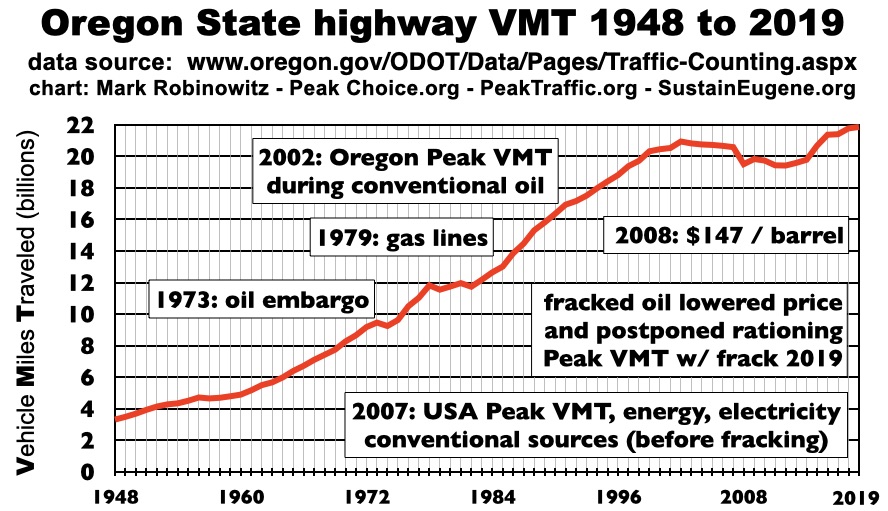
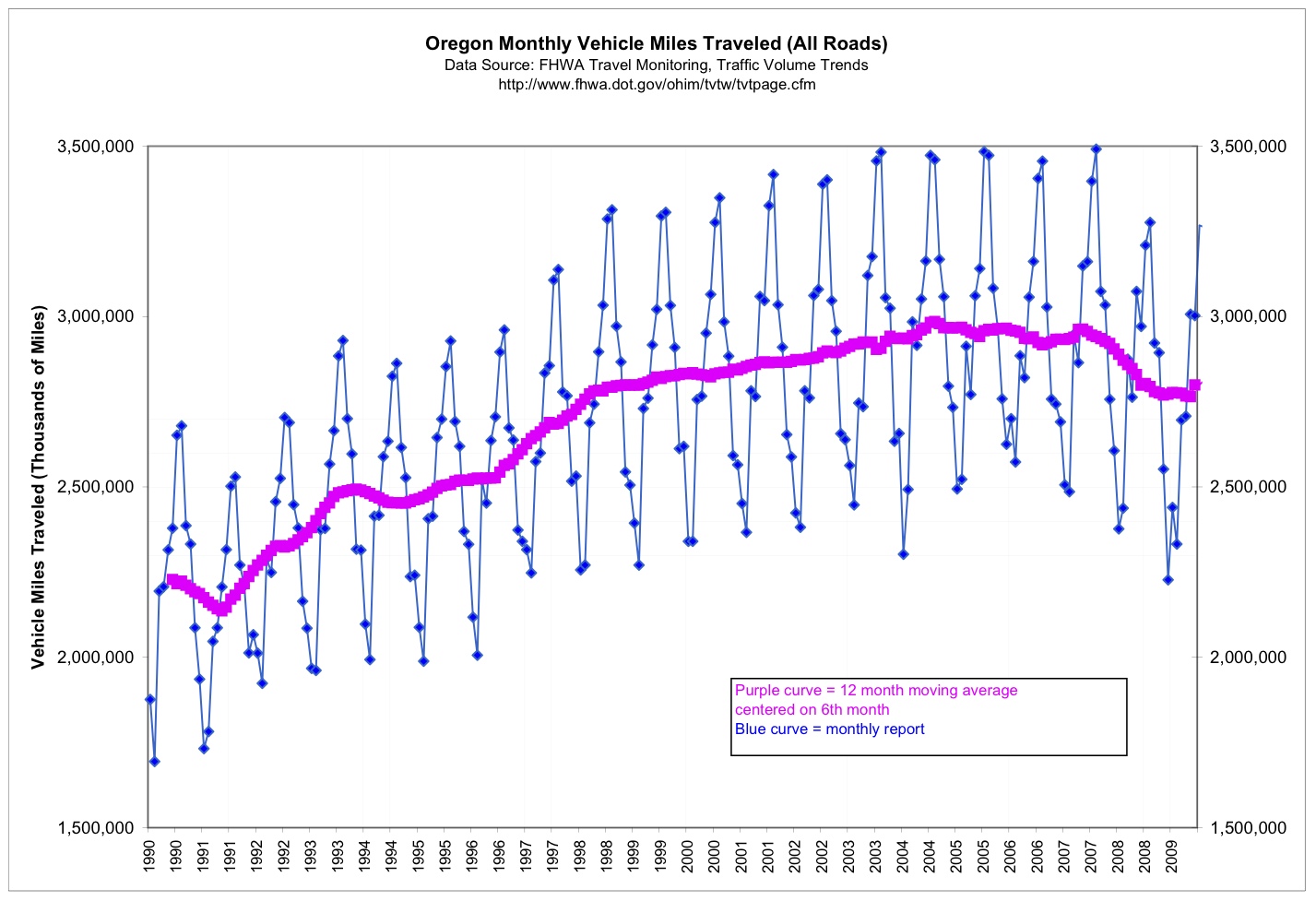
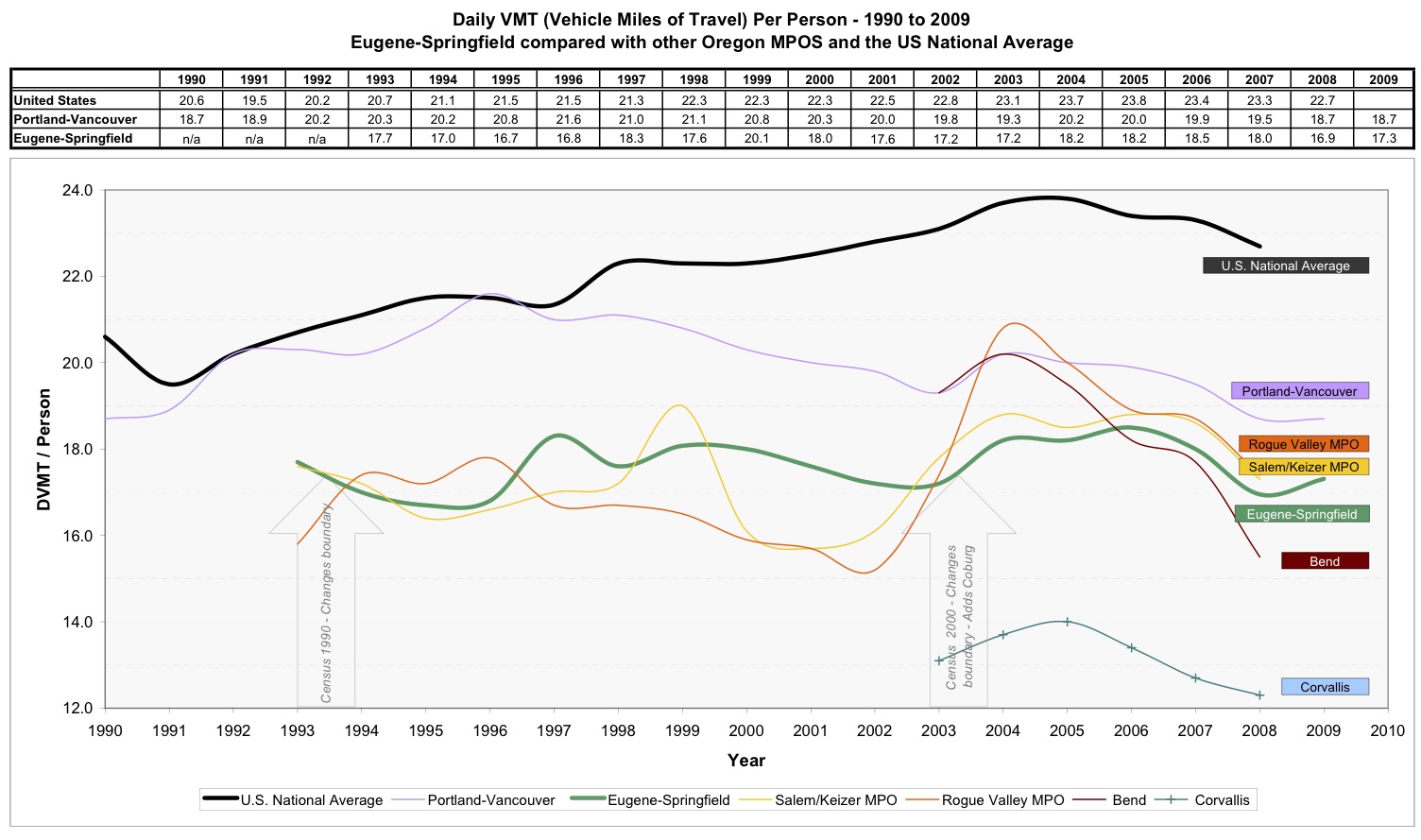
Eugene, Springfield: Lane County, Oregon VMT
- West Eugene Porkway: 1951 - 2007
- Section 4(f) prohibits roads through parks (the law that stopped the WEP)
- current plans for 12 - 14 lane wide Beltline
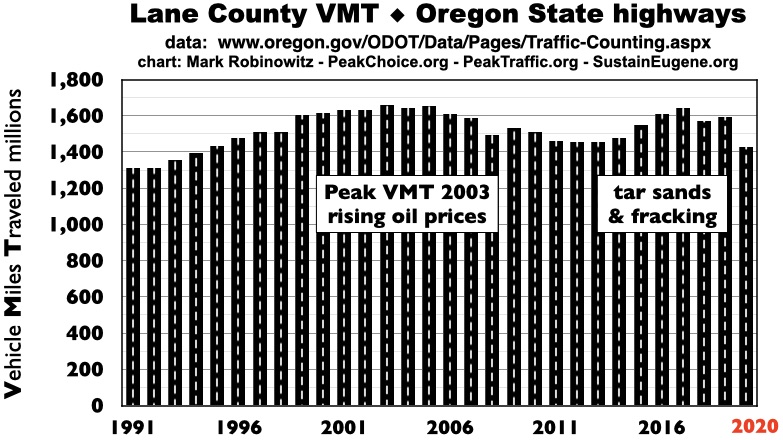
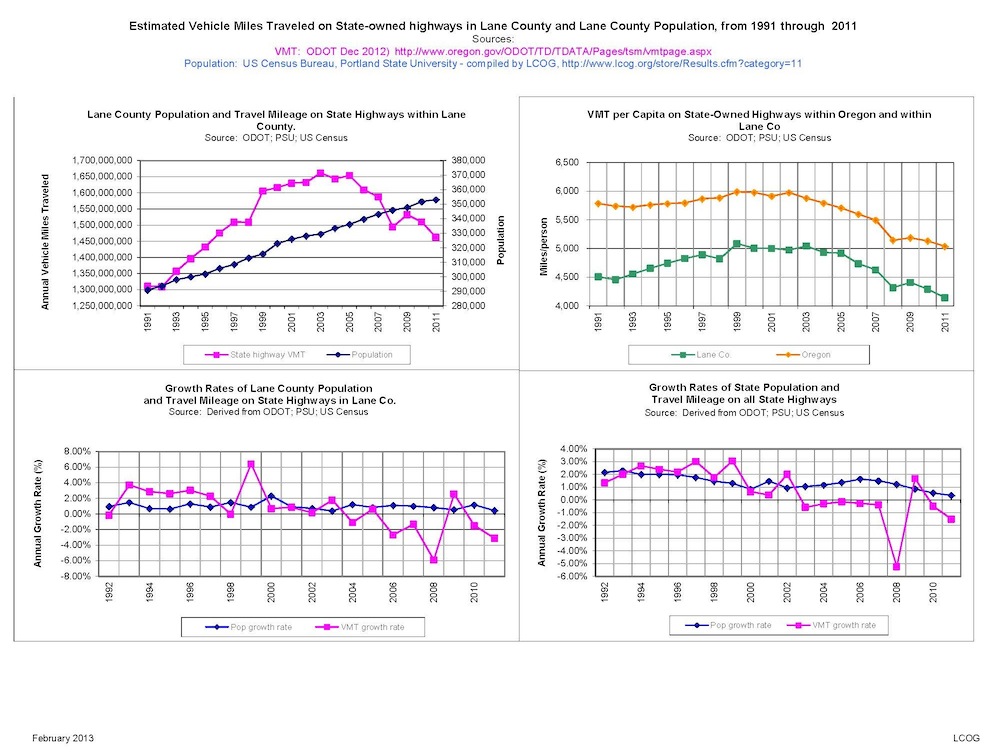
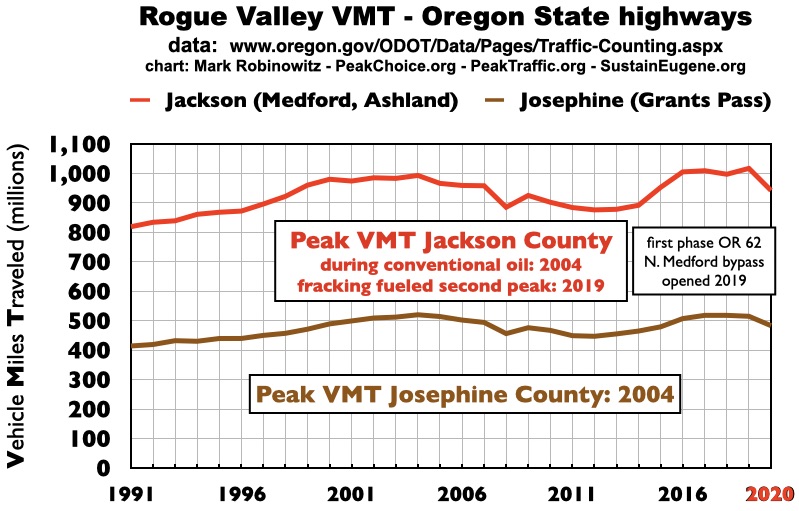
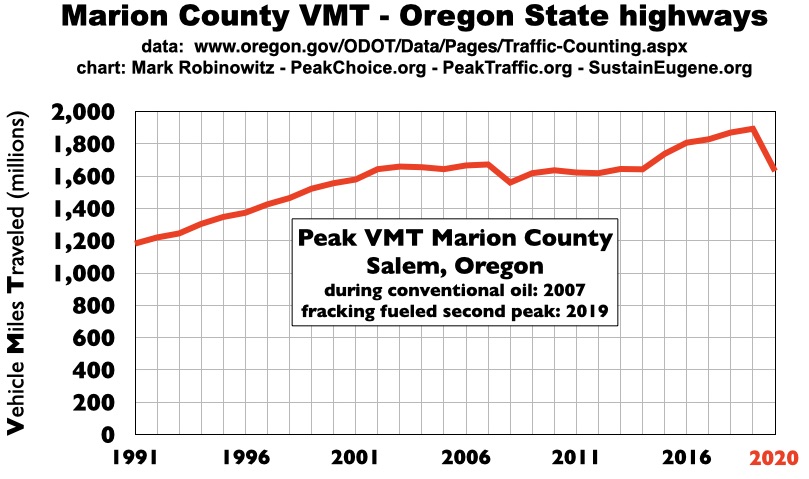
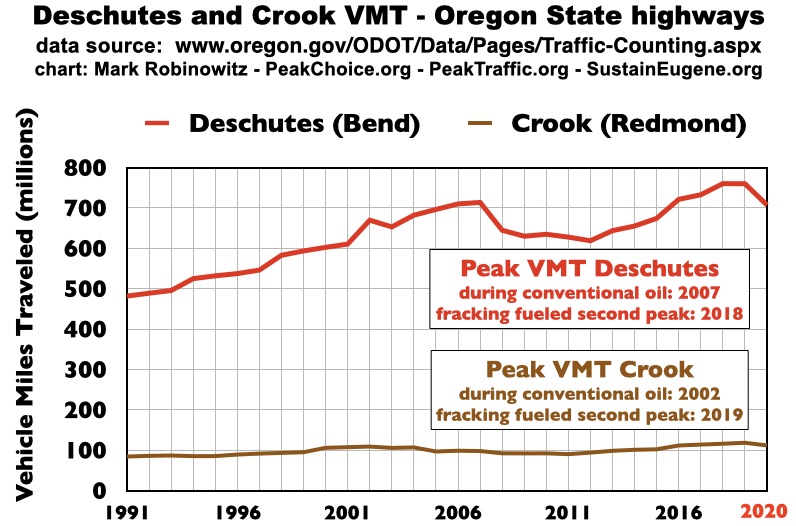
Post Carbon Institute report: www.postcarbon.org/article/40479-peak-vmt-are-americans-kissing
Peak VMT - Are Americans Kissing Their Gas Goodbye?
www.usatoday.com/news/nation/2008-06-19-drivingless_N.htm
Drivers cut back by 30B miles
By Larry Copeland and Paul Overberg, USA TODAY
Americans drove 22 billion fewer miles from November through April than during the same period in 2006-07, the biggest such drop since the Iranian revolution led to gasoline supply shortages in 1979-80.
The numbers released Wednesday may reflect more than a temporary attitude change in consumers toward high gas prices, Transportation Secretary Mary Peters said. Previously, she said, "people might change their pattern for a short period of time, but it almost always bounced back very quickly. We're not seeing that now."
The decline in total miles traveled, though only 1%, means that many drivers are cutting back far more because the number of drivers and vehicles grows by 1% to 2% a year. Americans are driving about the same number of miles as in 2005, when the USA had 8 million fewer people, according to a USA TODAY analysis of Federal Highway Administration data. The declines are sharpest on rural roads, indicating that people are cutting back on long-distance and vacation trips.
"It's not a blip," said Marilyn Brown, professor of energy policy at Georgia Tech, citing data showing surging transit ridership, dropping sales of sport-utility vehicles and sharply increased demand for gas-efficient vehicles. "I think the difference between now and 1979, when prices were comparable when you adjust for inflation, is there's a sense of sustained pain. There's a sense that the era of cheap energy is a thing of the past."
Among potential impacts of Americans driving less:
•Drivers might notice "some reduction" in traffic congestion, said Tim Lomax of the Texas Transportation Institute. "But over several months, the typical commuter will adjust their driving patterns," he said. "If they normally leave at 6 a.m., they might find they're getting to work without congestion, so they'll say, 'I'm going to spend an extra 15 minutes sleeping or reading the paper and leave at 6:15.' You get enough people doing that and you're back to congestion."
•Housing patterns could change as more people buy houses closer to work or find jobs closer to home, Lomax said. "We might not be seeing so much of that right now since so many people are upside down on home loans because of the mortgage crisis," he said.
•A shift in the way the nation pays for roads, bridges and transit. As people drive less, the federal Highway Trust Fund — derived from gasoline and diesel taxes — is receiving billions less, Peters said. She's promoting tolling and making drivers pay more during peak hours.
David Snyder, 40, an engineer in Internet operations at Turner Broadcasting in Atlanta, is moving from suburban Alpharetta to a new project near downtown. "It costs more than $60 a week in gas, and that's not including parking," Snyder says of his current costs. "That's this week. It might be $75 by next week."
www.cnn.com/2008/US/05/26/gas.driving/index.html
As gas goes up, driving goes down
(CNN) -- At a time when gas prices are at an all-time high, Americans have curtailed their driving at a historic rate.
The Department of Transportation said figures from March show the steepest decrease in driving ever recorded.
Compared with March a year earlier, Americans drove an estimated 4.3 percent less -- that's 11 billion fewer miles, the DOT's Federal Highway Administration said Monday, calling it "the sharpest yearly drop for any month in FHWA history." Records have been kept since 1942.
According to AAA, for the first time since 2002, Americans said they were planning to drive less over the Memorial Day weekend than they did the year before.
Tracy and Adam Crews posted on iReport that their annual Memorial Day weekend has traditionally involved camping and fishing.
"Well, due to the continual rise in gas, we felt our only recourse was to nix the idea this year and stay home" in Jacksonville, Florida, they wrote.
Instead, the couple said they "decided to camp out in the backyard. We set the tent up, just finished installing our above ground pool, and cleaned up the grill. ... We have ourselves a campsite! It's been a blast!"
Nakeisha Easterwood of Smyrna, Georgia, said with gas prices on the rise, she sometimes catches rides with friends, and doesn't drive into town more than once a day. "It's crazy," she said.
According to AAA, the national average price for a gallon of regular gas rose to a record $3.936. That compares with an average price per gallon of $3.23 last Memorial Day.
"With it being near $4 a gallon, you definitely have to drive slower and pick and choose when you're going to do it," said Steve Kahn of Roswell, Georgia, at a Memorial Day festival in Atlanta.
Some Americans have turned to public transportation. Ridership increased by 2.1 percent in 2007, in part because of rising gas prices, according to the American Public Transportation Association.
Americans took 10.3 billion trips on public transportation in 2007, the highest level in 50 years, the group said.
The Energy Information Administration says gas consumption for the first three months of 2008 is estimated to be down about 0.6 percent from the same time period in 2007.
For the summer season, gas consumption is expected to be down 0.4 percent from last year.




